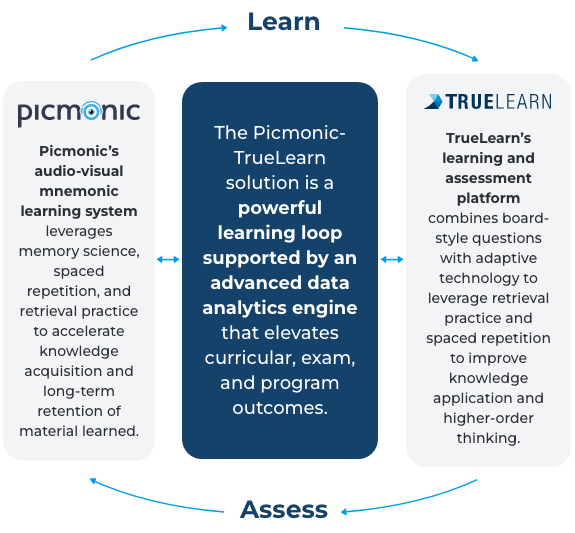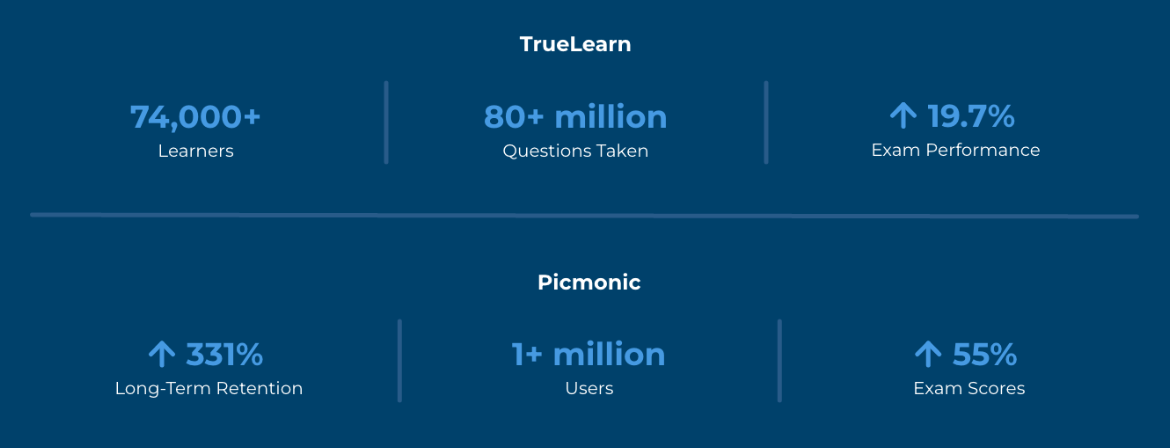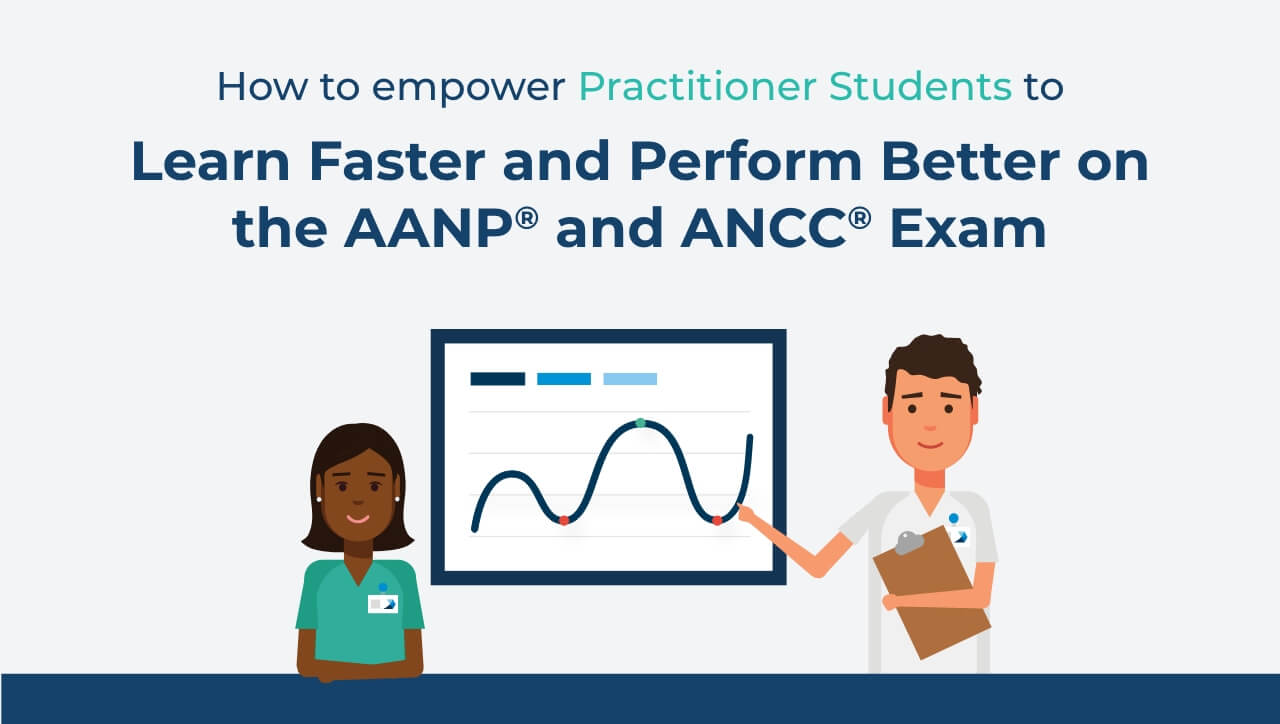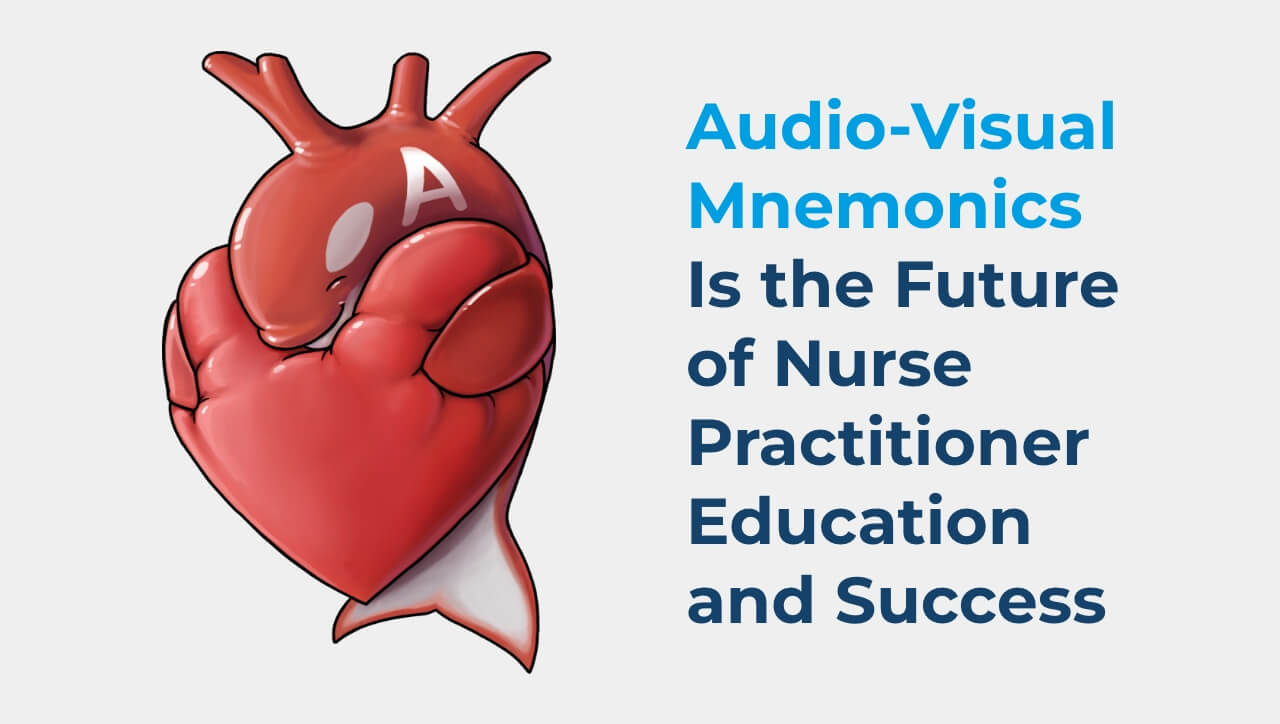The Picmonic-TrueLearn Solution: The Future of Nurse Practitioner Education and Success

The nurse practitioner (NP) curriculum is demanding and challenging, requiring students’ utmost commitment, dedication, and focus to learn, master, and recall large amounts of complex concepts and technical terms. On top of that, students need to be able to apply this knowledge in clinical settings and on the AANP® or ANCC® certification exam to achieve a first-time pass.
As it is, faculty are stretched thin between clinical, teaching responsibilities, and scholarly work. Additionally, the current shortage of educators in nursing—expected to worsen by 2025 as one-third of the current workforce will retire1—will place an increasing burden on the existing faculty.
What can programs and faculty do to ensure students are mastering and retaining the information taught? How can NP programs maximize learning and teaching, while optimizing students’ chances of certification success?
Leading audio-visual mnemonics learning system, Picmonic, now integrated with TrueLearn’s learning and assessment platform, delivers a highly effective and efficient solution that empowers students through the intensive NP curriculum and helps optimize academic hours for faculty. Here’s how.
The Picmonic-TrueLearn Learning Loop
Picmonic makes learning more exciting and engaging by bringing 1,800+ NP concepts to life through whimsical characters, memorable stories, and animated videos—each aligned to the three-step memory process of encoding, storage, and retrieval. TrueLearn elevates students’ application of knowledge through a rich bank of board-style practice questions, customized quizzes, and robust data-driven features. Together, Picmonic and TrueLearn create a powerful learning loop backed by cognitive science principles to elevate learning outcomes.

Students watch a Picmonic video built on learning science to master the key concepts they need to know, then take a low-stake quiz of board-style practice questions on TrueLearn to assess critical thinking. If they miss a TrueLearn question, they study the detailed rationales provided, revisit the material on Picmonic, and then return to TrueLearn to assess again.
Repeating this learning loop across the curriculum stimulates faster and better learning, mastery, and recalling of information. It also builds an in-depth understanding of key NP concepts and sharpens knowledge application for clinical practice—an essential component of both the AANP® and ANCC® exams. This is possible through a fusion of active learning activities, science-based methods, and data-driven tools that both platforms are founded on.
A Synergistic Effect That Delivers Results
Both Picmonic and TrueLearn apply retention algorithms to help students overcome the effects of the “forgetting curve”—as hypothesized by Hermann Ebbinghaus, learned information fades over time if there are no attempts to relearn it—by delivering timely prompts and reminders to keep information fresh in their minds. The Picmonic-TrueLearn solution enables NP educators to incorporate active learning and learning science principles into teaching through proven, effective audio-visual mnemonic video lessons and low-stake practice exams via quizzes, or embed them into their lecture materials to increase engagement in the classroom.
Leveraging the synergy between Picmonic and TrueLearn saves faculty time planning lessons and “re-teaching,” and will bolster learners’ knowledge and critical thinking. As a result, students gain more confidence and are ready to learn more advanced concepts, leading to more significant program outcomes for institutions while maximizing students’ odds of achieving a first-time pass on the AANP® and ANCC® exams.

Find out how Picmonic and TrueLearn can improve nurse practitioner learning and exam outcomes. Speak to a representative or schedule a demo today.
Picmonic: Audio-Visual Mnemonics as an Active Learning Resource
Science has shown that using audio-visual cues, images, humor, and weird or odd elements help strengthen memory formation, whereas the Baker-Baker Paradox, which links acronyms with a phonetic component and a visual character, enforces storage. Picmonic leverages these proven science, resulting in active learning resources that align with the brain’s natural functions and support the three-step memory process of encoding, storage, and retrieval. In a randomized, double-blind, controlled study, students who used Picmonic showed a 331% improvement in long-term memory retention and a 50% increase in test scores.
Watch this video to learn how Picmonic can help your NP program optimize learning, exam performance, and end-of-program outcomes.
Educators thus need to spend less time crafting lesson plans or building active learning activities as Picmonic, mapped to popular textbooks and resources, easily integrates into the NP curriculum. By leveraging proven cognitive science strategies, Picmonic enhances classroom engagement and allows students to interact with the material, encouraging autonomous learning and deepening comprehension. When students can independently master the content they will likely be tested on and that is essential for practice, it further frees up faculty hours and bandwidth—educators can then focus on ensuring long-term knowledge retention and recall.
TrueLearn: Proven Data Solutions for Advanced Learning and Test-Taking
To further accelerate learning, Picmonic is integrated with TrueLearn’s data-driven teaching and learning tools to improve exam outcomes. TrueLearn’s FNP SmartBank of more than 1,800+ high-quality practice questions test the application of knowledge as assessed on the AANP® and ANCC® exams, allowing educators to hone students’ exam readiness and improve their performance on high-stakes exams.
Instead of spending time writing practice questions, educators can customize quizzes from TrueLearn’s FNP SmartBank and utilize them as student assignments, in didactics, paired with reading assignments, and more.
Additionally, the platform supports comprehensive data analytics that enables educators to readily track student progress and performance and spot comprehension gaps in specific body systems or clinical areas, so they can tailor teaching and provide more effective remediation.
Want to see a question you could use in your classroom?
Download your free TrueLearn sample question now!

*AANP® and ANCC® are trademarks of the American Association of Nurse Practitioners Certification Board (AANPCB) and the American Nurse Credentialing Center (ANCC) respectively. This content is not endorsed or approved by AANPCB or ANCC.
1 National Academies of Sciences, Engineering, and Medicine; National Academy of Medicine; Committee on the Future of Nursing 2020–, Flaubert, J. L., Le Menestrel, S., Williams, D. R., & Wakefield, M. K. (2021). The nursing workforce. National Academies Press.


